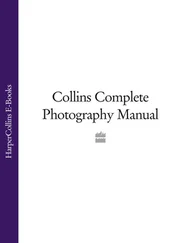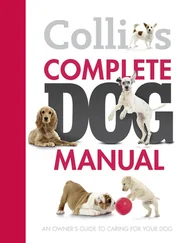Day packs Day packs typically forgo a frame and use a foam or plastic sheet for the back panel. This provides some rigidity and helps distribute weight to the hips (up to a point). How much of a frame you need depends on how much weight you plan to carry. For heavier weights, look for well-padded shoulder straps, a foam hip belt rather than just a webbing strap, and a chest compression strap. Day pack volumes range up to 3,000 cubic inches (49 liters).

 GOING ULTRALIGHT – PACKS
GOING ULTRALIGHT – PACKS
If you are going ultralight, then the size and weight of your pack can decrease substantially. The ultralight approach means three things—bringing less stuff, bringing lighter stuff, which means less volume of stuff. That means that ultralight packs don’t need to be so large; most are under 3,000 cubic inches (49 liters). Since you are carrying less weight, the pack doesn’t need to have a huge and heavy frame system to transfer the weight, so it can be made of lighter weight material. Since you aren’t carrying 50+ pounds (110 kilograms), you don’t need all that padding on the hip belt and the shoulder straps—you might not even need a hip belt. You can just feel the pounds melting off.
Ultralight Internal-Frame Packs have a lightweight internal frame with simple shoulder straps and a foam or webbing hip belt. Most of these packs weigh between 1 and 3 pounds (0.4 to 1.3 kilograms).
Ultralight Rucksacks forgo a frame altogether. They are typically just a bag with shoulder straps and weigh a pound (2.2 kilograms) or less. By stuffing the inside full of your gear or by adding a rolled foam pad, you “build” enough of a “frame” to transfer the weight. Some have a very light hip belt or no hip belt at all. If you keep the weight low enough you can comfortably carry all the weight on your shoulders. Some are made of lightweight mesh to reduce weight.

PACK SIZE
Size is an important factor when selecting a pack. You need to make sure that you can adequately carry all the equipment and food you will need for the length of your trip. Keep in mind that the pack bags of external-frame packs are smaller than those of internal-frame packs. This is because there are spaces on the external-frame pack to strap large items directly to the frame. For example, a sleeping bag in a stuff sack may be anywhere from 700 to 1,500 cubic inches (11 to 25 liters). Here are some rough guidelines on pack size related to trip length:
| Length of Trip |
External-Frame Pack Volume |
Internal-Frame Pack Volume |
| 2–4 days |
1,500+ cubic inches (25+ liters) |
3,500+ cubic inches (57+ liters) |
| 5–7 Days |
2,000+ cubic inches (33+ liters) |
4,500+ cubic inches (73+ liters) |
| 8–10 days |
3,000+ cubic inches (39+ liters) |
5,500+ cubic inches (90+ liters) |


TRICKS OF THE TRAIL
Buying a PackWhen you go to the store and try on a pack, the salesperson will help you adjust it, and it will feel great. Then she will give you a few sandbags (25–30 pounds or 11–13 kilograms) to add some weight. Chances are it will still feel good. The real test is when you get home and try to carry 50 to 70 pounds (22–31 kilograms). Make sure that the store will take the pack back if it doesn’t feel right. I bought a pack once without doing this test until I hit the trail. With 60 pounds in the pack, the hip belt slipped off my butt and I ended up carrying most of the weight on my shoulders. I hiked in discomfort for days.
SIZING A PACK
It is essential to have a pack that fits properly. The major measurements are your spine length, waist size, and shoulder width to get a pack the correct length and one with the correct size hip belt and shoulder straps. Packs vary from company to company, so check the manufacturer’s instructions for both fitting and loading. Many packs come with different size hip belts and/or shoulder straps and some are specifically designed for women’s bodies. The idea behind a frame pack is to have the frame transfer most of the weight to your legs through the hip belt. Therefore, when fitting a pack, the place to start is with the hip belt. Here are some general fitting guidelines:
Put on the pack and adjust the hip belt to fit your hips. Wear the hip belt on the hip bones just underneath the rib cage. The center of the hip belt is about at the crest of your pelvis. The buckle will be about at your navel. Wearing the hip belt higher transfers weight onto major muscle groups. Wearing the belt too low on the hips can compress arteries and nerves and lead to poor circulation and numbness in the legs.
With the hip belt on and properly positioned, tighten the shoulder straps and note their position. Some packs will allow you to adjust the height at which the shoulder straps attach to fine-tune your fit. For an external-frame pack the straps should come off the frame about even with the top of your shoulders. If the straps drop too far down, the pack is too small, and too much weight will be pulled onto your shoulders. If the straps go too far up, the pack is too large, and too little weight will go onto your shoulders. For an internal-frame pack the frame stays or frame structure should extend 2 to 4 inches above your shoulders. The shoulder straps should follow the contour of your shoulders and join the pack approximately 2 inches (5 centimeters) below the top of your shoulders. The position of the shoulder harness can usually be adjusted. The lower ends of the straps should run about 5 inches (12.7 centimeters) below your armpits. On both types of packs be sure the width of the shoulder straps is positioned so that they neither pinch your neck nor slip off your shoulders. On the shoulder straps you may find load lifters that connect to the pack at about ear level and connect to the shoulder straps in front of your collarbone. These help pull the top of the pack onto your shoulders.
Some internal-frame packs allow you to bend the frame stays to adjust them to match the curvature of your back.
In both types of packs the sternum strap should cross your chest below your collarbone. If the pack is properly fitted, you can adjust the load lifters and other fine-tuning straps to make the pack hug your back. Adjustments can also be made while hiking, periodically shifting the weight distribution to other muscle groups, which makes hiking less tiring.
PACKING YOUR PACK
Loading an External-Frame Pack
The major consideration in loading a pack is how best to distribute the weight. There are two basic principles: for trail hiking over generally flat ground, the weight of the pack should be high and relatively close to the body. The heavier items should sit between your shoulder blades. For consistently steep or rough terrain, carry the weight lower to give you better balance and avoid falls from having a higher center of gravity. In this case, heavier things should be placed more toward the middle of your back. To achieve either arrangement, load the heavier, bulky items into the large top compartment in the position where you want most of the weight. Then fill this and the remaining compartments with lighter items. Tents and tarpaulins can be lashed to the extender bars at the top of the pack and sleeping bags can usually be lashed to the frame at the bottom of the pack. In either case, the horizontal weight distribution should be balanced so that the left side of the pack is in balance with the right. A woman’s center of gravity is generally lower than a man’s. So, for women, the heavier items should be placed close to the body but lower in the pack, as in the case for rough terrain, described above. Packs designed especially for women take this into account by lowering the pack bag on the frame. Load these packs as described above and then lash sleeping bags and tents or tarpaulins to the extender bars at the top of the packs.
Читать дальше


 GOING ULTRALIGHT – PACKS
GOING ULTRALIGHT – PACKS











